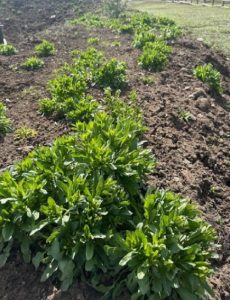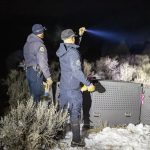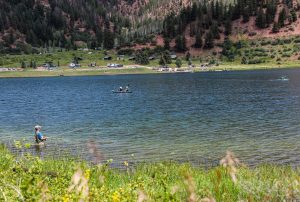Master Gardener: The Dirt on Dirt — why soil science matters
Master Gardener
Gardeners are often accused of talking to their plants. But let me let you in on a secret: we should be talking to our soil instead. After all, soil is the unsung hero of every thriving garden bed, backyard tomato patch, and rolling hay meadow in Routt County. Without healthy soil, we’re just playing in the dirt.
Soil isn’t just “stuff” beneath our feet. It’s a living, breathing ecosystem. A single teaspoon of healthy soil contains more microorganisms than there are people on Earth. Think about that the next time you dig into your garden bed! These tiny workers, bacteria, fungi, protozoa, and earthworms are the backstage crew keeping the show running. They recycle nutrients, improve soil structure, and even help plants defend themselves against pests. Soil science, in short, is the study of how these processes work, and why they matter.
Here in Northwest Colorado, our soils are as unique as our ski runs. Glacial history left us with a patchwork of sandy loams, clay-heavy stretches, and thin mountain soils that require thoughtful stewardship. If you’ve ever tried to grow a tomato at altitude, you know that soil health isn’t just academic, it’s survival.
Healthy soil does three big things for gardeners:
Plants don’t eat Miracle-Gro; they eat nutrients broken down in soil. Organic matter like compost fuels soil microbes, which in turn make nitrogen, phosphorus, and potassium available to roots.
Good soil is like a sponge. Poor soil is like a sieve. In our semi-arid climate, every drop counts, and healthy soil stores water where plants need it most.
Soil is one of Earth’s largest carbon sinks. By building organic matter, gardeners aren’t just improving their zucchini yield—they’re also helping lock carbon out of the atmosphere. Not bad for a Saturday chore.
The good news is that improving soil health doesn’t require a PhD, just a bit of care. Add compost or leaf mulch to feed soil life. Rotate crops in the vegetable garden to avoid nutrient depletion. Avoid compacting beds by walking on paths instead of planting areas. And most importantly: resist the temptation to “clean up” every leaf in fall. That litter is dinner for next spring’s soil critter
So next time you’re in the garden, remember plants may get the glory, but soil is the star. Give it the attention it deserves, and it will pay you back in tomatoes, tulips, and the occasional monster-sized zucchini. After all, the real dirt on gardening… is dirt itself.
Sarah Storm is a Master Gardener and the School Programs Manager at Yampatika in Steamboat Springs.

Support Local Journalism

Support Local Journalism
Readers around Steamboat and Routt County make the Steamboat Pilot & Today’s work possible. Your financial contribution supports our efforts to deliver quality, locally relevant journalism.
Now more than ever, your support is critical to help us keep our community informed about the evolving coronavirus pandemic and the impact it is having locally. Every contribution, however large or small, will make a difference.
Each donation will be used exclusively for the development and creation of increased news coverage.








